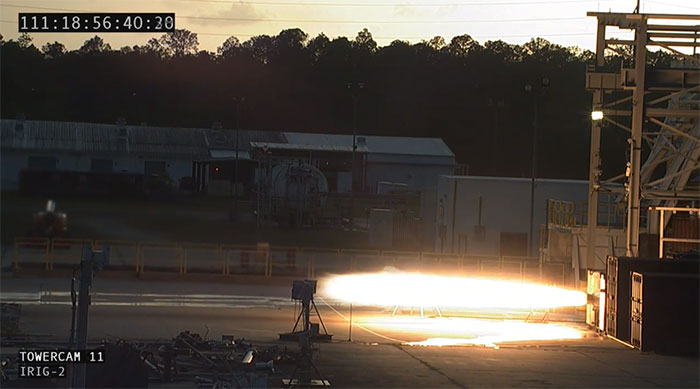E-2, the 3D-printed rocket engine developed by the American private aerospace company Launcher, has successfully passed its first maximum thrust test.
The private aerospace company Launcher is working on the development of the Launcher Light rocket, aiming to deliver satellites into orbit at a low cost and with a quick turnaround time. The Launcher Light has a payload capacity of 150 kg and is equipped with the E-2 3D-printed engine.
On April 21, Launcher successfully tested the maximum thrust of this engine for the first time at NASA’s Stennis Space Center in Mississippi. This marks one of the company’s significant milestones in its journey to launch rockets into orbit and join the ranks of private rocket companies.

The E-2 engine chamber is entirely 3D printed from copper alloy.
The E-2 engine uses a mixture of liquid oxygen (LOX) and kerosene, generating approximately 10 tons of thrust with a combustion pressure of 100 bar. The engine operated four times, each lasting 10 seconds, and remained in “perfect condition”, according to Launcher.
Unlike traditional rocket engines, the E-2 engine chamber is completely 3D printed from copper alloy. Launcher employs the AMCM M4K printer to manufacture the rocket components. Currently, the Launcher Light is not reusable, but Launcher hopes to create a version equipped with nine engines and a reusable first stage in the future.
3D printing technology is expected to play a significant role in space exploration. Companies like SpaceX, Relativity Space, and Rocket Lab have demonstrated that rocket parts can be entirely 3D printed, and this technology could even be utilized beyond Earth to construct launch pads or other structures. Last year, Relativity Space unveiled the first fully reusable 3D-printed rocket, although it has yet to reach the launch pad.
SpaceX was the first company to launch fully operational reusable rockets, although its Falcon 9 rockets are only partially reusable. The first stage of the rocket returns to Earth and lands vertically, while the second stage disintegrates upon re-entry into the atmosphere. SpaceX aims to launch Starship, its fully reusable spacecraft, as early as May, with the long-term goal of sending Starship to the Moon and Mars.

















































